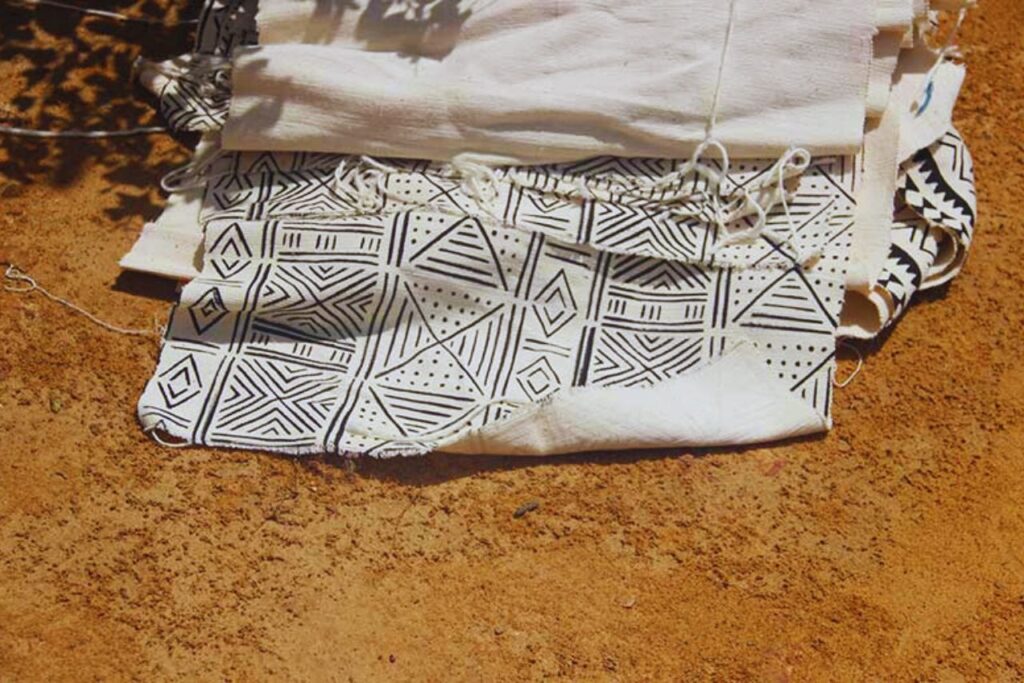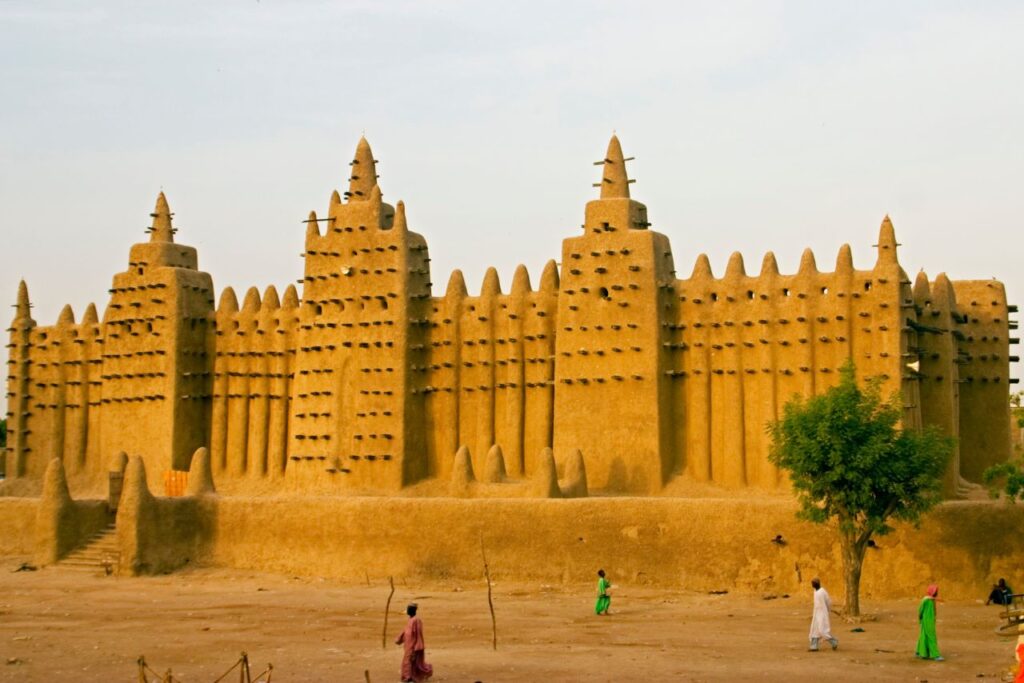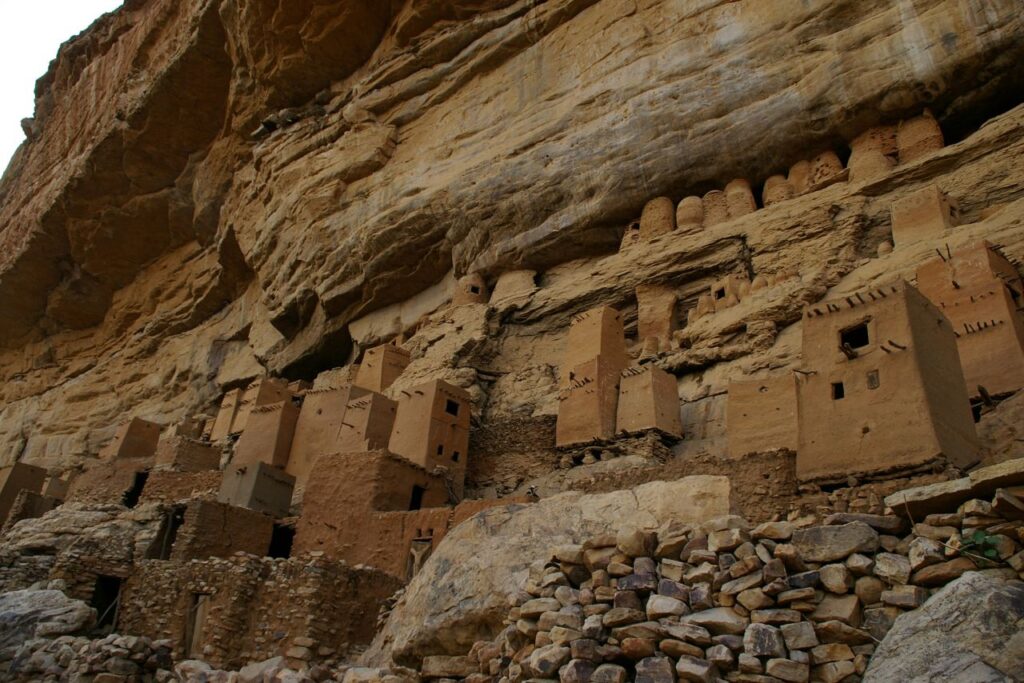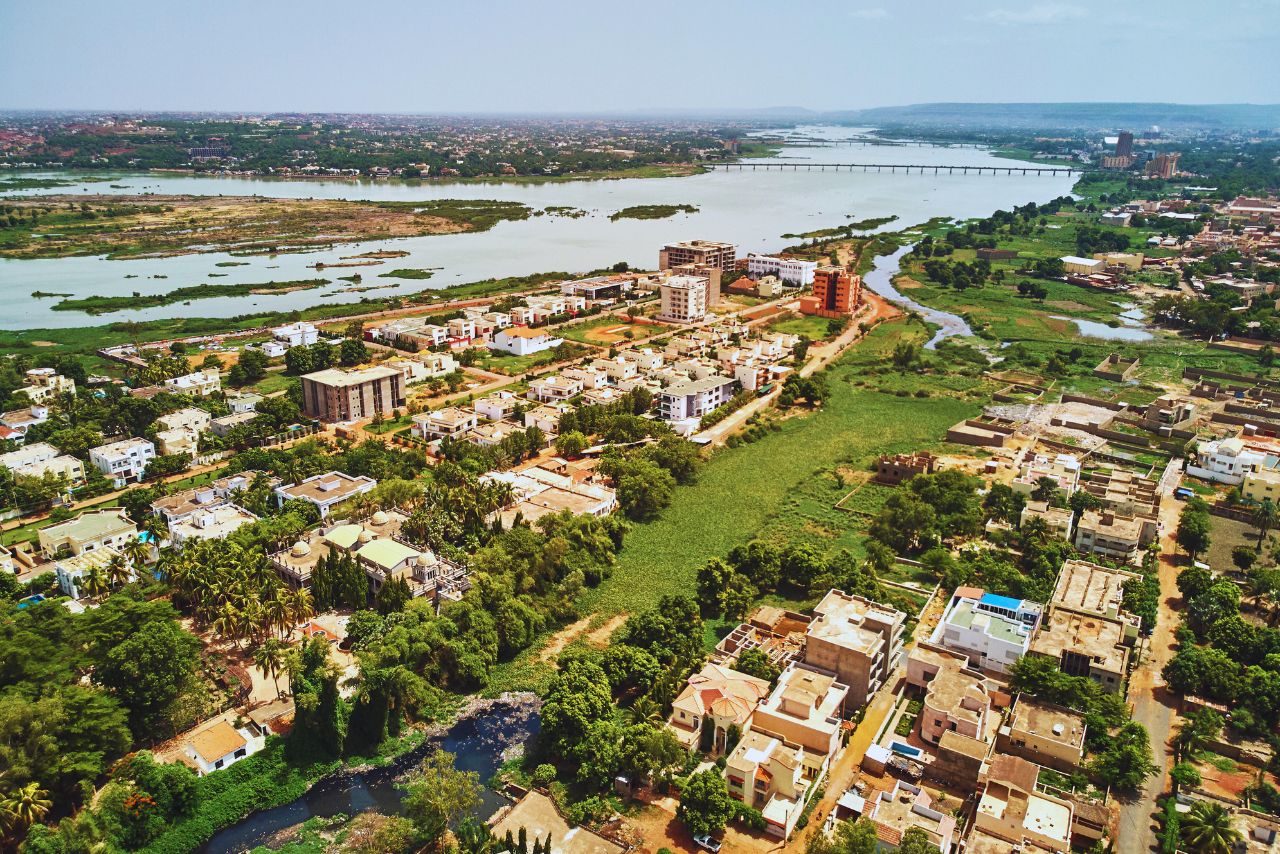Mali, stretching across the heart of West Africa, is a journey into one of humanity’s oldest and proudest civilizations.
This nation is a treasure of human history, a golden crossroads where empires flourished, and a powerful incubator for world-changing music.
This is the land of the legendary Mansa Mūsā, the wealthiest man in history, whose pilgrimage centuries ago put the scholarly center of Timbuktu on the global stage.
When you come here, you’ll feel like you’re walking right into a living history book. Instead of the noise of modern life, you’ll hear the majestic Niger River and the ancient footsteps of Saharan traders.
If you are drawn by deep heritage, by real travel, by landscapes that shift under your gaze, this guide is your companion.
It mixes what’s practical, what’s inspiring, and what’s true. Let’s walk together through Mali’s towns, rivers, cliffs, and communities. Let’s chart how to go, when to go, and what to feel when you arrive.
A Crucial Note on Safety and Responsibility
As a seasoned traveler sharing essential advice, I must speak plainly about safety.
While the cultural rewards of Mali are immense, the security situation in the central and northern regions, including the routes to Timbuktu and parts of Djenné, remains extremely challenging and unpredictable due to conflict and banditry.
Travel advisories from global governments strongly recommend against all travel to many parts of the country.
This guide focuses on areas generally considered safer for structured, guided travel in the south, such as Bamako, Ségou, and Siby.
When considering a trip, you must utilize specialized, security-aware tour operators and ensure you have comprehensive travel insurance, such as the policies offered by IATI, which specifically cover travel in complex areas.
This journey requires preparation and respect for local conditions.
By focusing your travel on the south, you responsibly support the Malian economy, its artists, and its hospitality workers while remaining safe.
READ ALSO: Top Hidden Gems in West Africa You Need to Visit
History

Before you explore modern Mali, it helps to understand the roots that made it legendary.
This land once powered some of Africa’s greatest empires (Ghana, Mali, and Songhai), which flourished between the 9th and 16th centuries.
These kingdoms grew rich through trans-Saharan trade, linking gold, salt, and knowledge across Africa and beyond.
The Mali Empire, founded by the famed Sundiata Keita, rose to global fame under Mansa Musa, often called the richest man in history.
His 14th-century pilgrimage to Mecca turned the world’s eyes toward West Africa, showcasing Mali’s wealth, scholarship, and influence.
Cities like Timbuktu, Gao, and Djenné became centers of learning and culture, attracting scholars from across the Islamic world.
Though centuries have passed, traces of that grandeur remain, carved into mud-brick mosques, preserved in ancient manuscripts, and alive in the proud traditions of Mali’s diverse ethnic groups.
It’s a country that remembers where it came from, and that deep sense of history shapes every experience you’ll have here.
Bamako

Begin your Mali journey in Bamako, the country’s lively capital and main gateway.
Home to over four million people, this city hums with color, sound, and motion along the banks of the Niger River.
It may not have ancient ruins, but it bursts with the modern spirit of Mali: young, creative, and full of life.
Spend your morning at the Grande Marché, a sprawling maze where you bargain for fabrics, spices, and crafts while soaking in the city’s energy.
Then stop by the National Museum of Mali, home to Dogon masks, Bambara ritual pieces, and models of Mali’s famous earthen mosques. It gives you a quick but powerful sense of the country’s soul.

Photo source: momaa.org
Later, watch sand collectors at the river, locals dredging sand used to build Mali’s iconic adobe homes.
As the sun sets, Bamako transforms into a city of music. Follow the drums to small bars or open-air venues, sip ginger juice, and feel the rhythm carry you into the night.
READ ALSO: Kumasi Travel Guide (Ghana): Ashanti Kingdom, Markets & Traditions
Ségou

Photo source: minzuu.com

A few hours northeast of Bamako lies Ségou, a calm, creative city that captures the heart of Malian art.
Once the capital of the Bambara Empire, Ségou sits gracefully along the Niger River, where elegant colonial buildings blend with traditional mud-brick architecture.
Begin your visit at the Monday Market, one of West Africa’s liveliest.
Along the riverbank, Bambara farmers and Bozo fishermen gather to trade, filling the scene with color, sound, and motion.
It’s the perfect window into daily Malian life.
Then, stop by the Centre of Textile Ndomo, where local artisans create Bogolanfini, the famous Malian mud cloth.
Spend some time wandering through the Somono neighborhood, a maze of adobe houses and craft workshops. Here, artisans carve calabashes, make musical instruments, and sketch scenes of daily life.
As the sun dips low, end your day with a pinasse (traditional wooden boat) ride on the Niger.
Ségou is one of Mali’s gentlest stops: a place to rest, reconnect, and feel the country’s soul in motion.
Djenné & the Great Mosque

No Mali guide is complete without Djenné. Its Great Mosque is the largest adobe (mud) structure in the world.
The current structure dates to 1907, though a version has existed since medieval times.
Each year, locals re-plaster the mosque in a communal event called crépissage, re-coating the mud with clay and rice husks to preserve its form.
Visiting the mosque’s interior is often restricted to Muslims; outsiders mostly admire it from outside.
But wandering the old town, passing narrow alleys, meeting locals, and standing near that earthen façade in shifting light is moving.
Be cautious: though Djenné historically has stood safe, the road here passes zones with security concerns.
Some governments advise against travel to the region. If you do go, travel with guides, start early, and check current alerts.
In recent times, tourism decline has hit Djenné hard.
Reports say tour guides struggle, visitor numbers are low, and the mosque’s upkeep is increasingly tied to local pride more than tourism dollars. That makes your presence, with respect, more meaningful.
Mopti & Dogon Country

Beyond Djenné, Mopti is a gateway into river life and then up into the cliffs of Dogon Country.
Mopti sits at the confluence of the Niger and Bani rivers.
Take pinasse (local wooden boats) to drift between islands, meet river communities, and glimpse scenes of everyday river life.
Then ascend into Dogon Country, where sandstone cliffs rise in terraces dotted with villages.
Footpaths snake between granaries perched on cliffs, caves hold ancient art, and masked dances preserve oral history.
Some local festivals still happen, masked dancers narrate creation myths through ritual.
Note: parts of Dogon Country are under warning due to sporadic conflict in central Mali. Tour with an experienced operator who tracks active zones.
READ ALSO: Ouagadougou City Guide (Burkina Faso): Art, Culture, and Music Scene
Siby

Photo source: sahelien.com
When the city noise fades, Siby offers the perfect escape.
Just 50 kilometers south of Bamako, this quiet region welcomes you with red cliffs, open skies, and the proud traditions of the Malinke people.
The flat plains give way to the rugged beauty of the Manding Mountains, where every path leads to a story and every vista feels earned.
Your goal is the Arch of Kamandjan, a dramatic natural rock formation perched high above the landscape.
Local legend says it was split by the warrior-king Kamandjan himself, marking the strength and spirit of Mali’s ancient past.
Hike with a local guide, and you’ll be rewarded with sweeping views over the plains and distant villages, a panorama that makes the journey unforgettable.
For the full experience, rent a motorbike in Bamako and ride out toward the hills.
Stop by small communities like Kaka Sirada or Dogoro, where time moves slowly and hospitality comes naturally.
Learn a few greetings in Bambara, share smiles, and take in the calm of rural life.
Siby invites you to travel simply and connect with Mali’s untouched countryside, one conversation and one dusty trail at a time.
Safety, Permits & Local Respect
Security First: Stay plugged in to the latest travel advisories.
Northern Mali and central zones (including parts of Mopti and Bandiagara) have frequent violent incidents.
Go only through operators who monitor alerts, coordinate local security, and vet routes.
Permits & Guides: Some areas demand authorization or region passes or must be visited with approved guides.
Don’t assume free access. Guides help with language, local norms, and navigating risks.
Respect Culture: Mali is predominantly Muslim.
Dress modestly, especially in rural areas. Ask before taking photos of people. Be mindful of local rituals and sensitivities.
Health & Gear: Bring sun protection, hydration, first aid, insect repellent, and sturdy shoes.
In remote stretches, amenities vanish quickly. Carry chargers, power banks, and satellite communication if possible.
Be Adaptive: Roads may close, transport fails, and plans shift.
Use that flexibility to discover unnoticed villages, serendipitous conversations, or unexpected detours.
Why Mali Still Matters
Despite conflict, Mali endures.
The mud walls are repaired; manuscripts are returned; music still breathes. Tourism may have retreated, but Mali’s culture pulses quietly and deeply.
Your respectful journey helps maintain connection.
Mali is not for the light traveler. It demands your patience, your awareness, and your humility. But in return, it offers resonance.
If you feel a pull toward Mali, start now. Research one route. Reach out to one trusted operator. Plan a flexible window.
The world is closing some doors, but Mali still holds its stories. And people are still waiting to share them with someone who cares enough to come.
Your tripod, your journal, and your open mind matter. Mali will show you its bones and its pulse. If you go, go with respect, awareness, and wonder.







